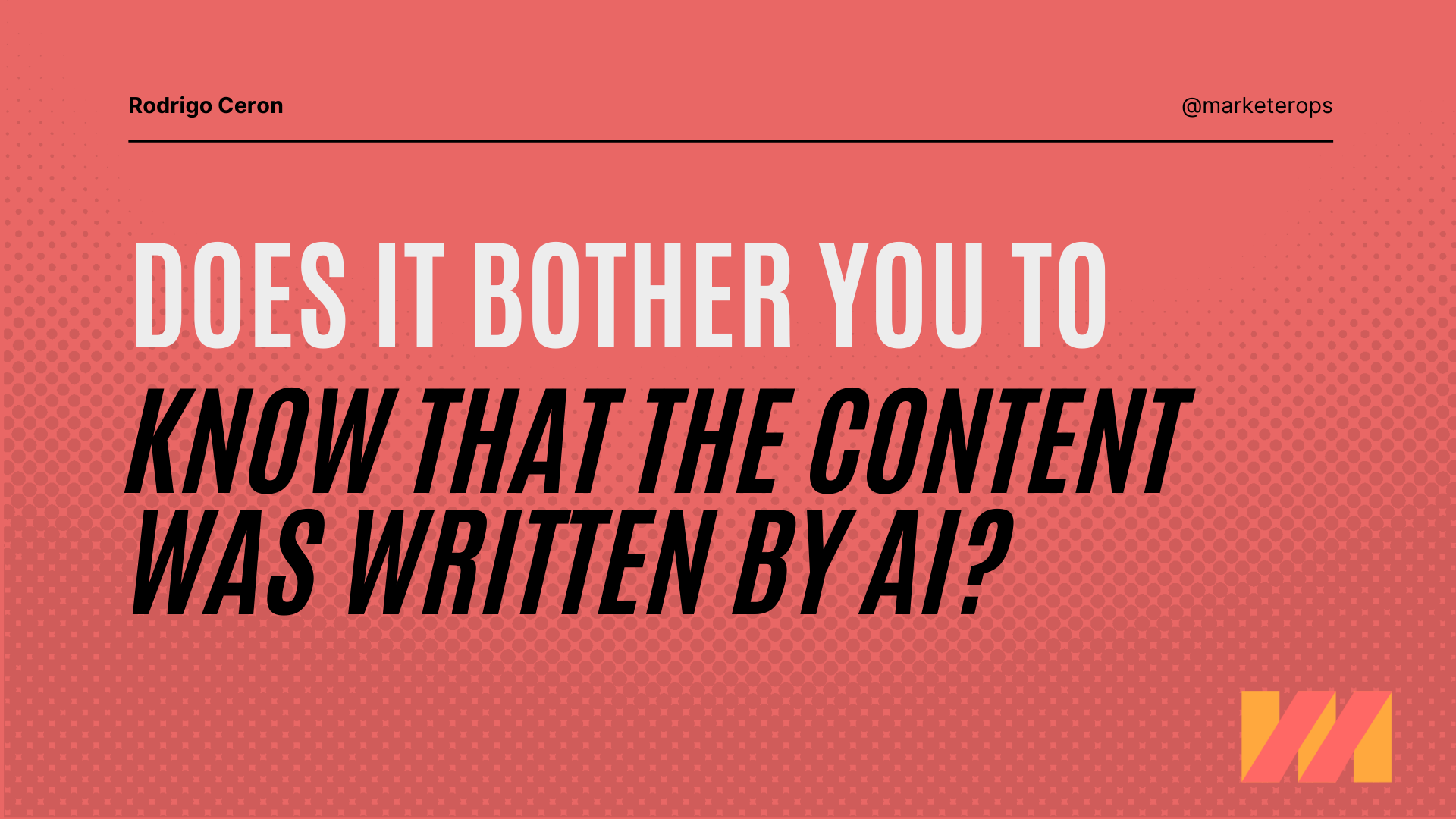
We keep acting like labeling something “made with AI” is a health warning when it’s already become the production standard.
You’ve noticed this, right? There’s content you consume daily — you enjoy it, find it useful — but the moment you discover it was created with artificial intelligence, you automatically devalue it. It’s like the same text that seemed brilliant five minutes ago suddenly becomes less valid simply because you know its origin.
Why do we keep behaving this way?
Because we’re scared. Scared that we’re being deceived. Scared that “artificial” equals “fake.” Scared that if we didn’t struggle to create something, it wouldn’t have the same merit.
But there’s something we’re not seeing: the problem isn’t the quality of AI content. The problem is our resistance to this paradigm shift.
The industrialization of content has already arrived.
Think about it like the evolution of the food industry. Before, everything was harvested by hand. Then came tractors. Then the machinery. Until we reached the mass industry we know today.
Did we stop eating because food is no longer hand-harvested? Of course not. We simply learned to value artisanal versus industrial differently.
And that’s the key: it’s not about eliminating the human element, but recognizing when something has that special touch.
That’s why I think we should flip the paradigm: don’t warn when you use AI. Warn when you DON’T use it.
Today, we highlight when a dessert is artisanal, when a dress is handmade, and when a product has the producer’s care. Why don’t we do the same with content?
What bothers us isn’t what you think.
When we see AI-generated content, what makes us uncomfortable isn’t the quality. It’s that we feel excluded as humans from the creative process.
We believe something made with AI requires no effort, when the reality is that well-made content with artificial intelligence still needs human analysis, reflection, curation, and judgment.
If I’m driving and don’t know how to get somewhere, I use Waze. I don’t feel bad about not memorizing every street. I don’t warn my passengers: “Warning: this route was calculated by artificial intelligence.” I simply use the tool that helps me get there faster and better.
Why should content be any different?
The real mindset shift.
Today, none of my clients has asked me not to use AI.
You know why? Because the real judgment, the real filter, comes when you see the output. When you see the result.
Instead of obsessing over the process, let’s focus on the result.
Did the content add value to you? Did it make you think? Did it help you solve a problem? Did it entertain you? That’s what matters.
Do you want to position yourself as someone who adds value and results, or as someone who does things artisanally?
Neither is wrong. They’re simply different objectives.
Sometimes you need Grandma’s artisanal cake recipe. Sometimes you need to produce 100 cakes daily to meet demand.
Both approaches are valid. Both have their market. Both can be successful. Both have their place. Both have their value.
Let’s assume all professional content already uses AI and start valuing only the results.
Because if your competition uses AI and achieves higher quality than you doing it artisanally, they’re going to have more content of better quality. And they’re going to win.
Not because they use AI. Because they achieve better results.
The tool doesn’t determine quality. The person using it does.
The real problem isn’t AI.
The real problem is that we keep wasting time on debates that no longer matter, while the world keeps moving forward.
The quality of AI content can be excellent. What fails is our mindset about how to evaluate it.
When we start valuing only results, we’re going to break this unnecessary debate about whether it’s right or wrong to use artificial intelligence.
Because in the end, what bothers us about AI content isn’t the quality.
It’s that it reminds us that the world has changed, and we’re still resisting changing with it.


